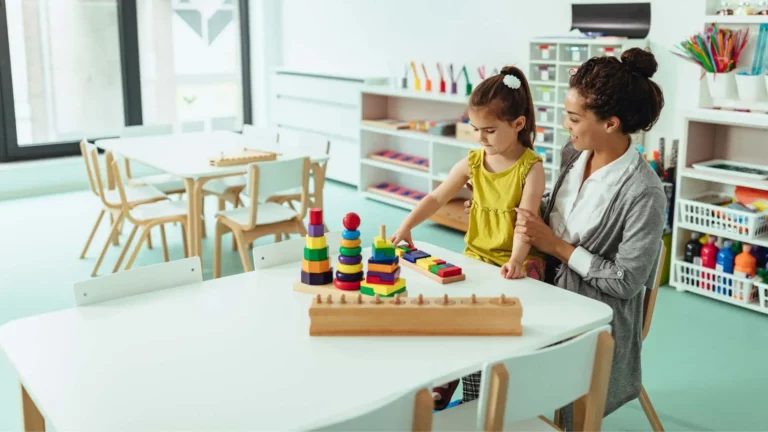Table of Contents
Financial literacy can be fun and meaningful. This is especially true when it’s taught through hands-on family activities. Kids learn best when lessons are interactive and relatable. It is connected to real-life experiences. Working together on money-related activities builds practical skills. It encourages teamwork. It also fosters a sense of responsibility.
By incorporating real-world tools like Beem’s Everdraft™, families can model smart money habits and responsible cash flow management. This is all while keeping learning enjoyable and easy to understand.
Why Family-Based Financial Learning Works
Shared Experiences Build Understanding
Children learn more effectively when they participate in family activities. This is true rather than just listening to explanations. Hands-on experiences make financial concepts more memorable and meaningful.
Safe Environment to Make Mistakes
Family activities provide a low-risk space for kids. They make and learn from mistakes. This builds confidence and understanding. This is without real financial consequences.
Teaches Values Beyond Money
These lessons go beyond dollars and cents. They reinforce important values like patience. It also needs planning, teamwork, and goal-setting. All these are essential skills for future financial success.
Foundation for Adult Financial Habits
Children who grow up engaging in structured financial play are more likely to develop confidence in managing their money. You also need to manage credit and financial tools, such as Everdraft, as adults. Early exposure lays the groundwork for smart money habits later in life.
Read related blog: Kids’ Activities: Prioritize by Skill Stacking
Activity 1 — Grocery Store Budget Challenge
Objective: Help kids learn how to stick to a budget.
How to Play:
- You can give your child a set amount of real or play money.
- You must create a short shopping list together.
- Let them pick and compare prices. It will ensure they don’t go over budget.
Lesson Learned:
Children learn how to prioritize, make trade-offs, and think before making a purchase.
Everdraft™ Connection:
Just like adults manage everyday expenses while planning for the future.
Activity 2 — Family Savings Jar Race
Objective: Make saving fun and rewarding.
How to Play:
- You should set a savings goal. It can be like a toy or a family outing. It can also be a donation.
- Everyone contributes a little each week.
- You must track the progress. You can use a chart, stickers, or a clear jar. This lets kids see their savings grow.
Lesson Learned:
Patience, consistency, and the excitement of reaching a goal over time.
Everdraft™ Connection:
It shows how planning ahead helps keep finances under control.
Activity 3 — DIY Home Store Game
Objective: Teach kids about earning and spending. It makes smart choices.
How to Play:
- You set up a small “store” at home. This with toys, snacks, or books.
- You must give kids play money to buy or sell items.
- You must let them decide how to spend their money. It is what to save for.
Lesson Learned:
Kids understand the value of budgeting and that every choice has a trade-off.
Everdraft™ Connection:
Similar to how adults plan their spending carefully. It avoids overspending.
Read related blog: Save on Kids’ Activities: Swap Networks and Skill Shares
Activity 4 — Board Games With a Money Twist
Objective: Learn about money through play.
How to Play:
- You can play family games. It can be like Monopoly or The Game of Life.
- You can talk through earning and saving. You can also discuss spending choices during the game.
- It will be reflected on together after each round. This will let you know what worked and what didn’t.
Lesson Learned:
Strategic thinking, decision-making, and understanding financial consequences.
Everdraft™ Connection:
Adults make daily financial choices just like in the game. It will balance short-term needs. It will also help you achieve long-term goals.
Activity 5 — Monthly Family Budget Meeting
Objective: Help kids understand how families manage money in real life.
How to Play:
- You should sit down together once a month. You can review income, expenses, and savings together.
- You must show kids where the money goes. You can ask them for ideas. This is how the family can save. They can also use funds wisely.
Lesson Learned:
Kids see the importance of planning and being transparent. This will help you take responsibility for shared goals.
Everdraft™ Connection:
This mirrors how adults manage resources carefully. It is while keeping financial flexibility.
Activity 6 — Saving for a Family Goal
Objective: Teach teamwork and planning through a shared financial goal.
How to Play:
- You can choose something to save for together. It can be like a trip, a new appliance, or a fun activity.
- You can track everyone’s contributions, including allowances, chores, and extra savings.
- You should watch the savings grow week by week.
Lesson Learned:
Kids learn that small efforts add up and that patience and teamwork can make big goals possible.
Everdraft™ Connection:
Just like adults plan for future expenses, they manage short-term needs using tools like Everdraft™.
Read related blog: How to Build a Fun Money Fund Without Skipping Bills: The Definitive US Guide
Activity 7 — Charity or Giving Challenge
Objective: Demonstrate to kids how money can have a positive impact.
How to Play:
- You must set aside a small portion of the allowance or family budget for a donation.
- Let the kids help choose a cause or organization to support.
- You can discuss why giving back is important.
Lesson Learned:
It will encourage generosity and empathy. It also boosts thoughtful use of resources.
Everdraft™ Connection:
Teaches that responsible money management isn’t just about personal goals. However, it can also help others.
Activity 8 — DIY Investment Simulation
Objective: Introduce kids to the basics of investing.
How to Play:
- You can give kids play money to “invest” in pretend items or simple stocks.
- You must track how their “investments” grow or change over time.
- They can discuss what happens and why.
Lesson Learned:
Kids begin to understand risk and growth. They will learn why long-term planning matters.
Everdraft™ Connection:
Adults also balance short-term spending. This comes with long-term investing. It will help stay financially secure and flexible.
Activity 9 — Coupon and Discount Hunt
Objective: Teach kids how to find value and shop smart.
How to Play:
- You should give kids coupons or show them promo deals. This is best before going on a shopping trip.
- You can challenge them to find the best prices. They can use discounts wisely and see how much they can save.
Lesson Learned:
They’ll practice comparing prices. It involves making thoughtful spending choices and planning strategically.
Everdraft™ Connection:
Just like adults manage spending carefully, Everdraft™ can offer short-term flexibility. This is without overspending.
Read related blog: Beem Pass for Couples: Simplifying Money Management
Activity 10 — Reflection and Debrief Sessions
Objective: Reinforce what kids have learned from all the money activities.
How to Play:
- After completing a few activities, you must sit together as a family. You can talk about what worked well. You can also share what could be improved and what they learned.
- You should encourage kids to keep a simple family finance journal. You must track wins and mistakes.
Lesson Learned:
Builds accountability, reflection, and better planning for the future.
Everdraft™ Connection:
Similar to how adults review their spending and repayment habits. They will use financial tools like Everdraft™ wisely. This way, they can learn from experience.
Conclusion
Family activities offer a fun and practical way to teach kids about money management. Children learn essential skills like budgeting, saving, spending wisely, and setting goals. This is by turning lessons into hands-on experiences.
Linking these lessons to real-world tools like Beem’s Everdraft™ helps them see how financial responsibility works in everyday life. It shows that smart money management isn’t just about rules. Download the app now!
FAQs on Fun Family Activities That Teach Kids About Money Management
At what age is it best to start financial family activities?
You can start simple activities as early as ages 5–6. As kids grow, you can make the lessons more detailed and practical. It will match their understanding.
How can I make financial lessons engaging and fun?
You must turn learning into a game. You can use challenges, savings trackers, pretend shopping, or friendly competitions to motivate yourself. It will keep kids engaged and excited.
Can pocket money be integrated into these activities?
Yes! You must give kids small amounts of pocket money; it lets them practice real budgeting. It involves making safe savings and spending decisions.
How often should we do these activities?
Weekly or monthly sessions work best for such fun activities. This keeps the lessons consistent. This is without making them feel like a chore.
How does Beem’s Everdraft™ connect to family financial activities?
Everdraft™ shows how adults can plan, spend strategically, and manage short-term needs responsibly. These are the same money skills kids build through family activities. It is just in a more hands-on, age-appropriate way.















































